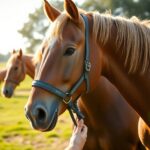Handle your feathered friend with care and understanding if they show fear towards newcomers. Birds are highly sensitive creatures and their fear can stem from a variety of factors, including past trauma or lack of socialization. To help your bird feel more at ease, it’s crucial to introduce new people gradually while providing a safe environment. In this guide, you will learn practical steps to ensure your bird remains calm and gradually builds trust with others, ultimately leading to a more harmonious and enjoyable experience for you and your avian companion.


Understanding Your Bird’s Fear
To effectively help your bird overcome its fear of new people, it’s crucial to first understand the root causes behind this fear. Birds are naturally instinctual creatures, and their reactions to unfamiliar situations often stem from their survival instincts. Fear can manifest due to past experiences, general anxiety, or lack of exposure to various stimuli. Remember that each bird is an individual, and its background can heavily influence its behavior. A bird that has experienced trauma or inconsistent handling may be particularly skittish around new faces.
Common Causes of Fear in Birds
Any change in environment or routine can be distressing for your bird. New people, loud noises, or sudden movements can trigger an instinctual response to flee or freeze, as your feathered friend may perceive these changes as threats. Additionally, birds that were not socialized at a young age can struggle with fear of new situations, as they may lack the necessary learning experiences to build trust and confidence with humans. Understanding these common sources of anxiety can help you approach your bird’s fear with empathy and patience.
Identifying Signs of Fear
With a little observation, you can learn to identify the signs that indicate your bird feels threatened or scared. Common signals include heavy breathing, fluffed feathers, and wide eyes. Your bird may also exhibit defensive behaviors like biting, lunging, or attempting to escape its environment. Recognizing these signs is crucial; they will guide you in adjusting your interactions to minimize fear and ensure that your bird feels secure around new people.
This awareness allows you to take a more responsive approach. When you notice your bird displaying signs of fear, consider providing it with a safe space or moving at a slower pace during interactions. Furthermore, positive reinforcement techniques—like offering treats or gentle praise—can significantly help in reducing your bird’s anxiety. Building a trusting, calm environment will facilitate better connections between your bird and any newcomers, ultimately helping ease their fear over time.

Preparing for New People
Little preparations can go a long way in ensuring that your bird feels safe and secure when new people are introduced into its environment. Properly setting the stage before introducing your feathered friend to visitors can help ease their fears and create a more enjoyable experience for everyone involved. It’s crucial to keep your bird’s comfort and well-being as the top priority during this transition.
Creating a Safe Environment
There’s no better way to start than by creating a safe and calming environment for your bird. Begin by ensuring that your pet has a designated space where it feels comfortable, such as its cage or a favorite perch. Keep this area free of any overwhelming stimuli—like loud noises or sudden movements—from both people and other pets. You might also consider using a cover for the cage during introductions, allowing your bird a sense of security while still letting new people gradually introduce themselves.
Additionally, try to minimize any changes to your bird’s routine before the visit. Your bird thrives on routine and stability, so avoid making drastic changes to feeding times or play schedules. This will help to maintain a sense of normalcy, making your bird feel more at ease around new faces.
Familiarizing Your Bird with New Faces
Even with careful preparation, it’s crucial to introduce new people gradually to your bird. Instead of letting strangers approach your bird immediately, you can have them spend time near the birdcage while keeping a calm and relaxed demeanor. Encourage your visitors to talk softly and allow your bird to observe their movements without pressure to interact right away.
For instance, you can have your guests offer your bird a special treat through the bars of the cage. This allows your bird to associate the new person with positive experiences, helping to build trust over time. Always take things at your bird’s pace—if it appears stressed or frightened, consider allowing it to take a step back and become more familiar with the person indirectly. Note, patience is key in building that trust, and every little interaction can make a significant difference in your bird’s comfort level.
Many bird owners encounter the challenge of a feathered friend that is fearful of new people. This fear can lead to stress not only for your bird but also for guests in your home. Understanding your bird’s behavior is key to fostering a positive environment. With patience and the right techniques, you can help your bird become more comfortable around new individuals without risking trauma or anxiety. In this guide, we will explore effective strategies to ease your bird’s fears while ensuring their well-being and happiness.
Tips for Ongoing Socialization
Keep in mind that ongoing socialization is crucial for helping your bird feel more comfortable around new people. Regular interaction, patience, and positive reinforcement are key strategies. Here are some tips to consider:
- Introduce new people gradually to avoid overwhelming your bird.
- Encourage visitors to approach your bird calmly and quietly.
- Use treats to create positive associations with new people.
- Allow your bird to observe new individuals from a distance before direct interaction.
- Establish a safe space for your bird to retreat to if they feel stressed.
Building Trust Over Time
An effective way to help your bird become more comfortable with new people is by focusing on building trust over time. Consistency is vital; try to have the same visitors interact with your bird during the initial stages of their socialization. This allows your bird to become familiar with specific individuals, gradually reducing their anxiety. Make interactions low-pressure; for example, let newcomers sit quietly near your bird’s cage, allowing the bird to approach them at their own pace.
Additionally, spend time engaging your bird in interactive games and activities that encourage socialization. This not only strengthens your bond but also helps your bird view new people as part of their social circle. Always observe how your bird reacts, and be ready to step in if they appear to be getting distressed or overwhelmed, ensuring you protect their mental health through gradual exposure.
Maintaining a Routine
Some birds thrive on predictability, which is why; maintaining a socialization routine can significantly benefit your efforts. Establish regular play and interaction times not just with you, but also with new people. This creates a structured environment where your bird feels safer. Encourage visitors to stick to these routines until your bird adjusts and begins to accept them as part of the household.
It’s important to ensure that every interaction follows a clear structure. Having set times each week where new visitors can come over will help your bird anticipate situations and can reduce their fear of the unknown. With time, your bird will learn to associate visitors with enjoyable experiences, making them more receptive and confident in social settings.
Recognizing the small victories in your bird’s socialization process will encourage more progress over time. Socialization takes patience, yet is immensely rewarding for both you and your bird.
Summing Up
Drawing together the insights from understanding how to handle a bird that’s afraid of new people, it is crucial for you to approach the situation with patience and empathy. Recognize that fear is a natural emotional response for many birds, especially when encountering unfamiliar individuals. Start by creating a calm environment and allowing your bird to acclimate at its own pace. Gradually introduce new people to your bird in a controlled manner, ensuring that interactions are positive and non-threatening. Employing treats and gentle spoken encouragement can help foster trust and confidence, making your bird feel more secure around newcomers.
Equally important is establishing a routine that incorporates socialization while respecting your bird’s boundaries. Encourage new people to engage softly and to avoid sudden movements or loud noises that may alarm your feathered friend. By prioritizing your bird’s comfort and well-being, you can facilitate gradual familiarity, thereby reducing its fear of new people. Ultimately, as you cultivate a supportive space conducive to adjustment, your bird will likely become more sociable, allowing for richer interactions and a more harmonious environment for both your pet and visitors.
FAQ
Q: What steps can I take to help a bird that is afraid of new people?
A: To help a bird that is afraid of new people, start by creating a calm environment. Allow the bird to become familiar with the sounds and scents of the new person from a distance. Encourage gentle interactions by having the person sit still and speak softly to the bird without attempting to touch or handle it at first. Gradually reduce the distance over time, and encourage positive experiences, such as treats or favorite toys, to associate new people with positive outcomes. Patience is key; allow the bird to set the pace of interaction.
Q: How can I recognize if my bird is stressed or uncomfortable around new people?
A: Signs of stress in birds can include feather fluffing, wide-open eyes, vocalizations such as screaming or shrieking, or trying to escape or hide. A bird may also exhibit a frozen stance or display aggressive body language, such as biting or lunging. Understanding your bird’s body language is crucial. If you notice these behaviors, it’s important to back off and allow the bird to feel secure again. Provide a safe space where they can retreat and feel comfortable.
Q: Should I force my bird to interact with new people to speed up the process?
A: No, forcing interaction can exacerbate fear and anxiety. It’s necessary to respect your bird’s comfort level. Instead, encourage voluntary interaction by allowing the bird to approach new people on its own terms. Introduce the new person gradually and avoid overwhelming the bird with too many new experiences at once. Use positive reinforcement, such as rewards or treats, to teach the bird that new people can be friendly and not a threat. Note, building trust takes time, and patience is crucial in this process.










